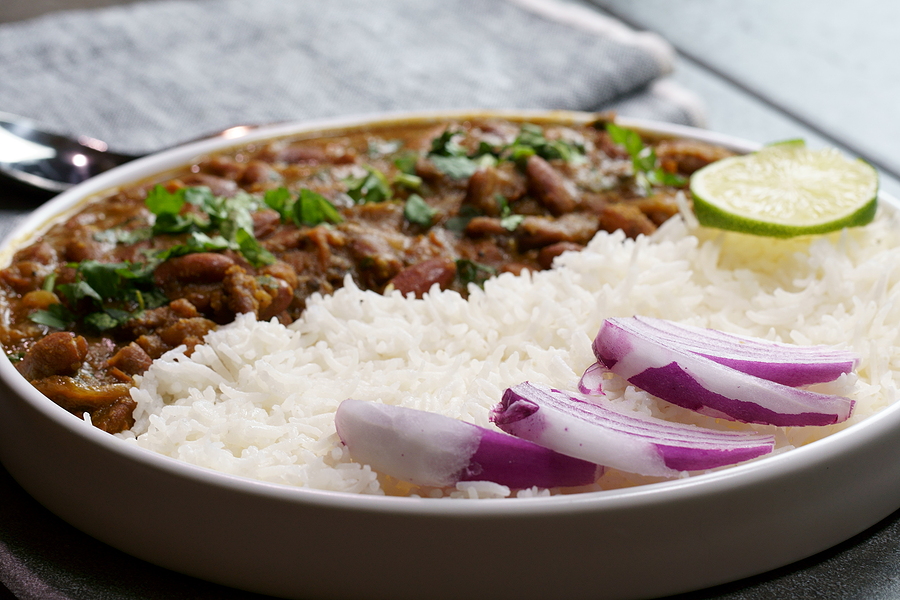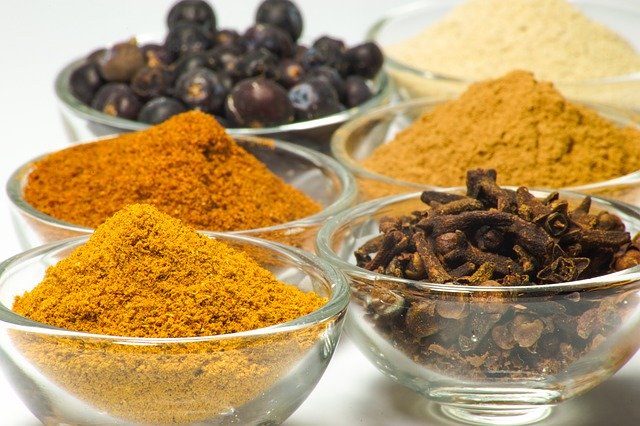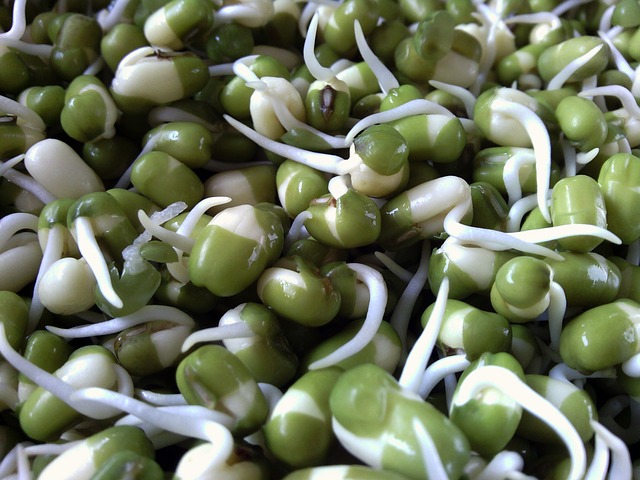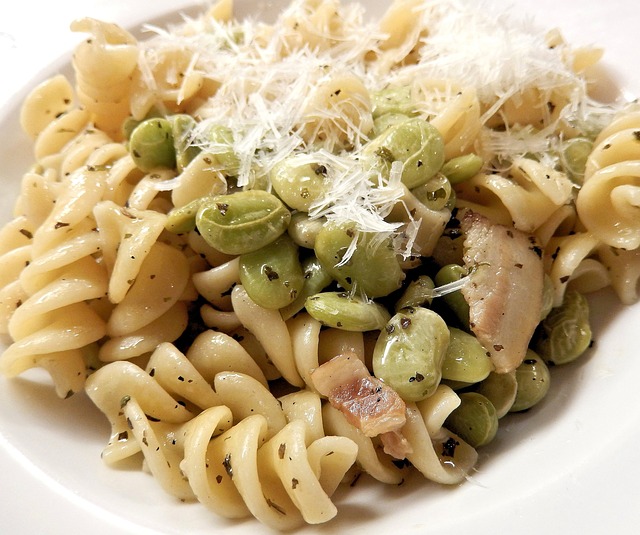Rice and beans are foundational to many people’s long-term food storage. Here’s how to buy them, store them, use them—and like them!
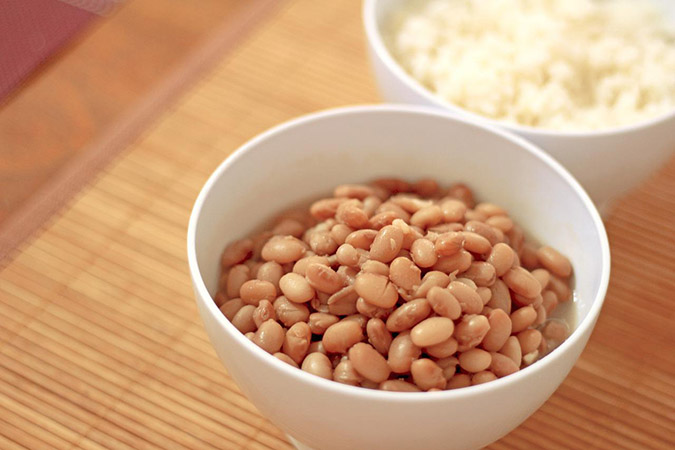
Image by Daniel Dan outsideclick from Pixabay
9 Essential Tips for Storing and Using Beans and Rice
The first thing that comes to mind for most folks when they consider long-term food storage is rice and beans. Among “preppers,” the saying “beans and rice and rice and beans” has come to be a description of short-term views of survival.1)http://www.thesurvivalpodcast.com/9-methods-of-storing-food-for-the-modern-survivalist , https://www.youtube.com/watch?v=j30pvfb0DCQ
Not being a true prepper myself (I’m more of a homesteader) and being a rice and beans fanatic, I find this to be a bit unfair.2)I loosely define a prepper as one who prepares for emergencies/disasters. I define a homesteader as one whose lifestyle is centered around independence and resilience regardless of circumstances. It is not a “hard and fast” distinction and is certainly not meant to be a criticism. But it is true that there are a couple of myths associated with storing rice and beans:
- The first is that all one needs to do in the face of an emergency is just run to the store and buy some rice and dry beans. In other words, storing them is unnecessary. Having lived through several hurricanes and the current COVID-19 pandemic, I can attest that rice and beans are among the first items to sell out in most stores—and they can take months to be fully restocked due to supply chain disruptions.
- The second is that rice and beans are either sufficient on their own for culinary enjoyment, or that they are bland staples of which one will quickly tire.
In addition to those myths, there is much confusion concerning storage life.
How Long Will Dry Beans Last in Storage?
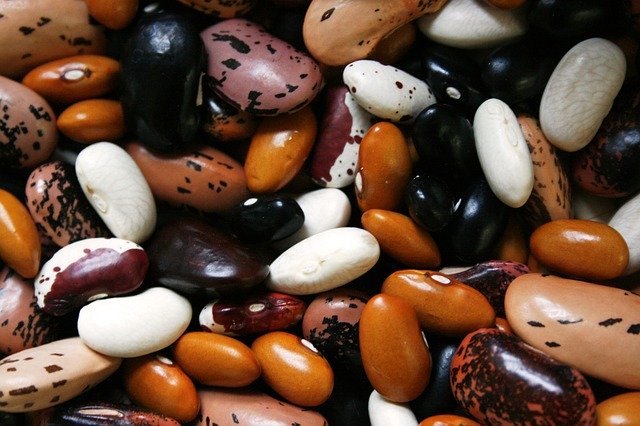
Image by Jan Nijman from Pixabay
In terms of storing beans, one need not look far to find conflicting information. According to the publication “Food Storage Cooking School” by the Utah State University Extension,3) “Use It or Lose It!” by Rebecca Low, MS, USU Extension Home Economist; and Deloy Hendricks, PhD, Nutrition and Food Science Specialist; Utah State University Extension; January 1999 (2nd Edition), optimum length of storage for dried beans is 12 months. However, the average “sell by” date for dry beans in the grocery store is around 2 years out … meaning that they should be good for 3 years with no elaborate measures taken for storage.
You May Also Enjoy:
“Your 10-Step Food Security Action Plan”
“5 Keys to Food Security in Extreme Weather, for Home Gardeners”
“Food Security, Quality, and Convenience in the COVID-19 Era”
On the other end of the spectrum, there are extremely dubious claims that were popularized by the marketing of Anasazi beans. Supposedly, an archeologist exploring an Aztec cave discovered a sealed pot containing Anasazis that were more than 1,500 years old.4) https://www.wisegeek.com/what-are-anasazi-beans.htm Not only were the beans found to be edible and delicious, but also they germinated and were thus reintroduced to the world!
If that claim is true, that means beans are second only to honey (such as that found stored in Egyptian pyramids) in terms of items that work well for long-term food storage.
Well, most beans fail to germinate after around 50 years of even the best storage conditions … so, maybe not. But storing them properly will certainly extend their usable life.
How to Properly Store Dried Beans and Rice
Beans must be protected from vermin, sunlight, oxygen, moisture, and heat. In proper long-term storage conditions, the average storage life for dry beans is around 30 years.
You May Also Enjoy:
“5 Ways to Find Farmers in Your Area”
White rice should also last around 30 years in storage. Brown rice, however, has a much shorter shelf life. The recommended method for storing both dried beans and white rice is to use Mylar bags; oxygen excluders; and food-grade, sealable plastic buckets. For detailed instructions and additional information, I recommend checking out this link for storing beans and this link about storing rice.
Where to Buy Dried Beans and Rice in Bulk
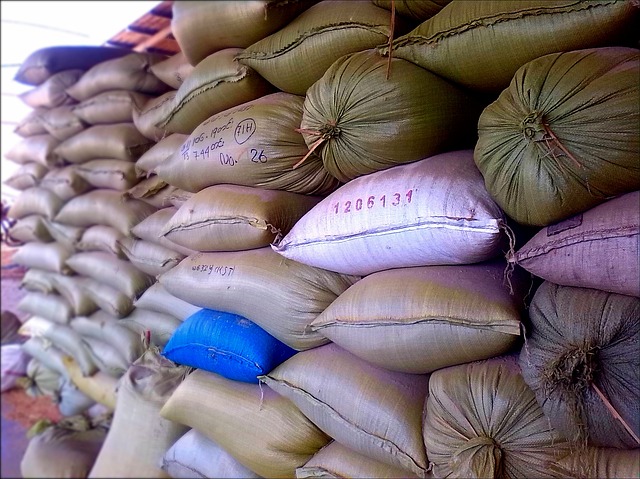
Image by chitsu san from Pixabay
Finding rice in bulk is easy. As I write this, you can purchase 50-pound bags of rice at big box stores like Sam’s Club for around $20.
Where to source bulk dried beans is another issue. Sam’s Club has dried pinto beans for around $1/pound in bags of varying size. Prices are approximately double in the grocery store—$2/pound for most dry beans. A few calls to food co-ops proved them to be the best source for purchasing dried, organic beans, with an average price of $2–$5/pound, depending on the variety.
Online retailers may have slightly lower prices, or beans already pre-prepped for storage in the proper containers, but at the writing of this article, too many are sold out on Amazon to do a fair comparison (probably due to COVID-19, again). Restaurant wholesalers may be another option. Some sell to the public, or you may be able to make an arrangement with a local restaurant owner to order from those who sell to restaurants exclusively.
How to Find Seed Beans
Feed and grain/farm stores are a good source for seed beans. This may be appealing if you are concerned about germination rates or if you want seeds specifically inoculated with nitrogen-fixing bacteria.
However, I have experimented over the last few years with simply planting beans and peas purchased from the grocery store—the same bags of dry legumes I would use for cooking. I found the germination rates to be at least 90% for my store-bought beans and peas. These have included pinto, red kidney, black, navy, baby lima, large lima, and great northern beans; black-eyed, little red, purple hull, zipper cream, and dixie lee peas; and lentils. (I get the heirlooms already dried from a local produce stand.)
Beans grow well in most soils and climates, and can be grown in containers. According to the Texas A&M Agricultural Extension5)https://aggie-horticulture.tamu.edu/vegetable/guides/the-crops-of-texas/beans-and-vegetables-legumes , yields may be 1,500 to 3,000 pounds per acre of dried beans, depending on the variety sown!
I have never planted at that density and on such a scale; most readers of this article likely will not have either. However, an acre is 43,560 square feet. Can you plant 1/4th acre? How about 1/10th? Given those numbers, and depending on your situation, growing your own beans could be cost effective … and is one of the best ways to ensure the quality of what you will be eating.
Using Rotational Stocking
Once you have sourced your beans and rice, and properly stored them, the next concern is how to use them. Always use the oldest stored items first. Anyone who has ever worked at a grocery store knows the virtues of rotational stocking! When you stock shelves, you stock the newest items at the back of the shelf and the oldest items are pushed to the front. This is essential in the home storage of food.
You May Also Enjoy:
“Bonus Download: Food Storage Rotation Tracker”
Many canned and dried items, whether store-bought or home-processed, should last several years in a cool, dark pantry, protected from insects and rodents. I am still eating pickles, jellies, and preserves that were home-canned by my grandmother more than 20 years ago!
While those particular home-canned delicacies actually improve with age, fresh is better for most things. So, keep your own rotation going as you stock and rotate your stored foods, keeping notes if necessary. With proper rotation, simply buying a case or two of canned food each year may be sufficient storage for many … barring nuclear war or a “zombie apocalypse.”
Pantry Essentials That Keep Beans and Rice Interesting
Now, we must talk of the culinary qualities of rice and beans. They can be fairly bland on their own, so plan ahead with recipes you like and be sure to keep the necessary ingredients on hand. In my own pantry, my “beans and rice” necessities include:
- Salt
- Black pepper
- Red pepper
- Creole seasoning
- Chili powder
- Curry powder
- Parsley
- Oregano
- Mustard powder
- Garlic
- Onions (dried/powdered and fresh, if possible)
- Canned tomatoes
- Vinegar
- Sugar
- Molasses
- Cooking oil
If there are any other dried herbs or seasoning blends you really like, you’ll want to keep those on hand, too.
In addition, meat can be an excellent addition, and I recommend that you take some time now to think about how you will procure it in a survival situation. Will you hunt, fish, or trap? Will you keep chickens or other livestock?
You May Also Enjoy:
“Meat Rabbits: Raise Half Your Protein in 10 Minutes Per Day (VIDEO)”
Learning to cure meat with salt (and/or drying and smoking meat) is simple, easily doable, and will contribute much to most meals, including those primarily consisting of beans and rice.
At the very least, some canned meat, canned broth and stock, or even some bouillon cubes would be good additions to your pantry.
Plan Your Recipes Ahead
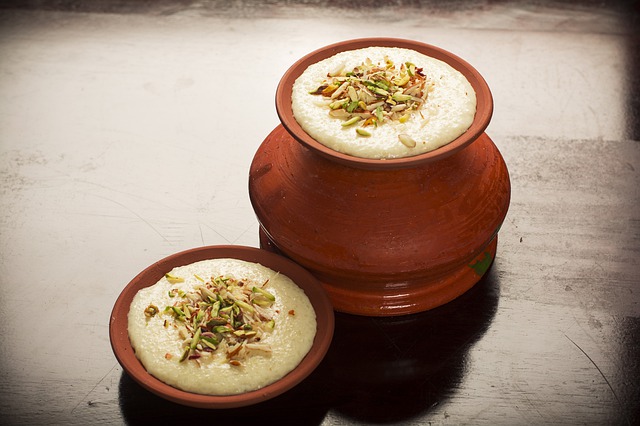
Image by Nrs_Kitchen from Pixabay
With these items on hand, one need not be pacified merely with the idea that “rice and beans are a complete protein,” 6)https://en.wikipedia.org/wiki/Rice_and_beans but one may prepare delicious meals! For instance, consider making red beans and rice, hoppin’ John, chili, a variety of soups, baked beans, fried rice, a low-country chicken bog, jambalaya, red rice … even rice pudding (with dried fruit).
Fish and rice also pair extremely well. I do not need an emergency to enjoy canned fish (sardines or salmon) with rice! Most often, though, I just cook beans with fatback (or bacon drippings) and salt.
Other Uses for Rice and Beans
Legumes need not only be viewed as dried storage food.
Beans, peas, and lentils can be sprouted to provide fresh, vitamin-rich food. It is very easy, and can even be done in a car or backpack in a “bug-out situation.” Basically, you just soak some dry beans in a jar, put some cloth over the top so you can pour the water off, and give them a rinse and drain a few times a day. You can read more detailed instructions here. Bean sprouts are great on a sandwich, in a stir fry, or just eaten as (or part of) a salad with a simple vinaigrette. Sprouts can provide essential vitamins.
You May Also Enjoy:
“Growing Microgreens and Sprouts Indoors All Winter Long (Video)”
Many varieties of peas can also be grown for their tasty and nutritious greens.
Sweet pea pods may be used to make wine, as can rice.
Really, the possible culinary uses for legumes and grains go far beyond merely bland meals of “rice and beans and beans and rice.”
Fermentation for Additional Variety
“But wait, there’s more!” Although beyond the scope of this article, my pitch for bean storage would not be complete without mentioning fermentation. Dilly beans are pickled, fresh green beans and are delicious.
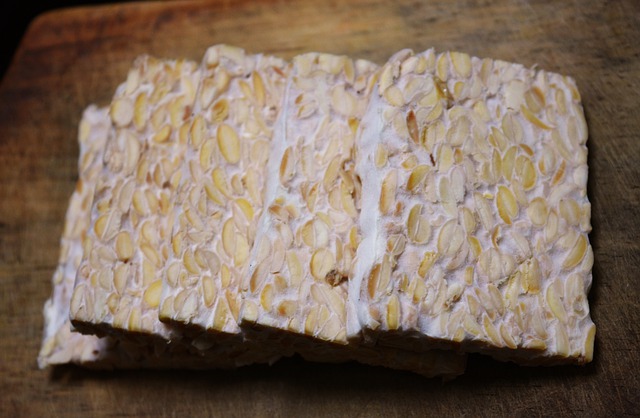
Image by Mochamad Arief from Pixabay
Asian ferments, such as miso and tempeh, go even further. Using specific inoculants, beans may be absolutely transformed. The inoculants are easily available from online retailers and the techniques are actually even more simple than storing dry beans. One may even make soy sauce. Moreover, tempeh, miso and “soy sauce” may be made with legumes other than soy beans … you can even make peanut tempeh!
Several excellent books on how to make tempeh and miso have been written in recent years, but the classics are still “The Book of Tempeh,” “The Book of Miso,” and “The Book of Tofu” by William Shurtleff and Akiko Aoyagi. Tofu is not necessarily a bean storage strategy (it can be), but bean curd can be made from beans other than soy, and it is a good technique to learn.
Tempeh tastes kind of like chicken, and miso is both tasty and very good for nutrition.
You May Also Enjoy:
“A Forager’s Guide to Running Out of Toilet Paper”
I won’t get into natto. It is extremely healthy, but it’s DEFINITELY an acquired taste! Honestly, I do not care for soy beans, so, the sticky, slimy qualities of natto are just too much for even me (a dedicated omnivore). 7) https://www.soyinfocenter.com/aboutus-authors.php
Finally, I must mention that the legumes themselves are quite varied. Obviously, a kidney bean, a black-eyed pea, and a peanut have little in common in terms of taste and texture.
Most dry beans need to be soaked (quick hot soak or cold overnight) before cooking, but both lentils and large lima beans can be cooked with far less effort and energy. In an emergency, both would be very beneficial to have on hand for quick, healthy, and delicious meals.
Lentils are among my favorite foods, cooked in chicken broth, with onions, garlic, bacon, celery, and parsley! But big limas are remarkable. They begin to fall apart after just a soak! The beans are very large and very tasty—savory and a bit sweet. I love them, cooked simply with salt, fat, and onions, and served with hot sauce.
However, there are nearly 40,000 edible beans worldwide, and all of them have unique flavors and textures. Some are best ground and cooked like a cornmeal or made into a spread. Some pop like popcorn. Chickpeas do all of the above, but even cowpeas can be ground and fried like “hush puppies.”
Steve Sando brought many Southwestern heirloom beans to national attention through his Rancho Gordo Farm in California.8)https://www.foodandwine.com/beans-legumes/seven-terrific-bean-recipes , https://www.ranchogordo.com/collections/heirloom-beans Although he grows several varieties that find high demand among chefs, one in particular, the Eye of the Goat Bean, has generated a great deal of interest and seems to often be sold out on his website. Why? Well, it is said to taste like beef … specifically like filet mignon! Now that is one bean that I think would be in high demand in any situation; it is certainly on my “grow out and store” list!
Beans and rice, rice and beans … sign me up!
What Do You Think?
Share your favorite ways to use beans and rice in the comments below!
________________
The Grow Network is a participant in the Amazon Services LLC Associates Program, an affiliate program designed to provide a means for our team to earn fees for recommending our favorite products! We may earn a small commission, at no additional cost to you, should you purchase an item after clicking one of our links. Thanks for supporting TGN!

Judson Carroll grew up in both the mountains and coastal swamps of North Carolina, on family farms that predate Americas’ founding. Although he holds a Permaculture Design Certificate, most of what he knows about permaculture and gardening he learned from his grandfather and great grandfathers, who had a permaculture homestead and “food forest” before “permaculture” was a term. Judson learned to cook from his mother and grandmother, who were ladies best described as profound. He spends most of his life in the woods or on the water, and tries his best to be the kind of old fashioned, traditional, Southern gentleman who would make his ancestors proud.
References
| ↑1 | http://www.thesurvivalpodcast.com/9-methods-of-storing-food-for-the-modern-survivalist , https://www.youtube.com/watch?v=j30pvfb0DCQ |
|---|---|
| ↑2 | I loosely define a prepper as one who prepares for emergencies/disasters. I define a homesteader as one whose lifestyle is centered around independence and resilience regardless of circumstances. It is not a “hard and fast” distinction and is certainly not meant to be a criticism. |
| ↑3 | “Use It or Lose It!” by Rebecca Low, MS, USU Extension Home Economist; and Deloy Hendricks, PhD, Nutrition and Food Science Specialist; Utah State University Extension; January 1999 (2nd Edition) |
| ↑4 | https://www.wisegeek.com/what-are-anasazi-beans.htm |
| ↑5 | https://aggie-horticulture.tamu.edu/vegetable/guides/the-crops-of-texas/beans-and-vegetables-legumes |
| ↑6 | https://en.wikipedia.org/wiki/Rice_and_beans |
| ↑7 | https://www.soyinfocenter.com/aboutus-authors.php |
| ↑8 | https://www.foodandwine.com/beans-legumes/seven-terrific-bean-recipes , https://www.ranchogordo.com/collections/heirloom-beans |
